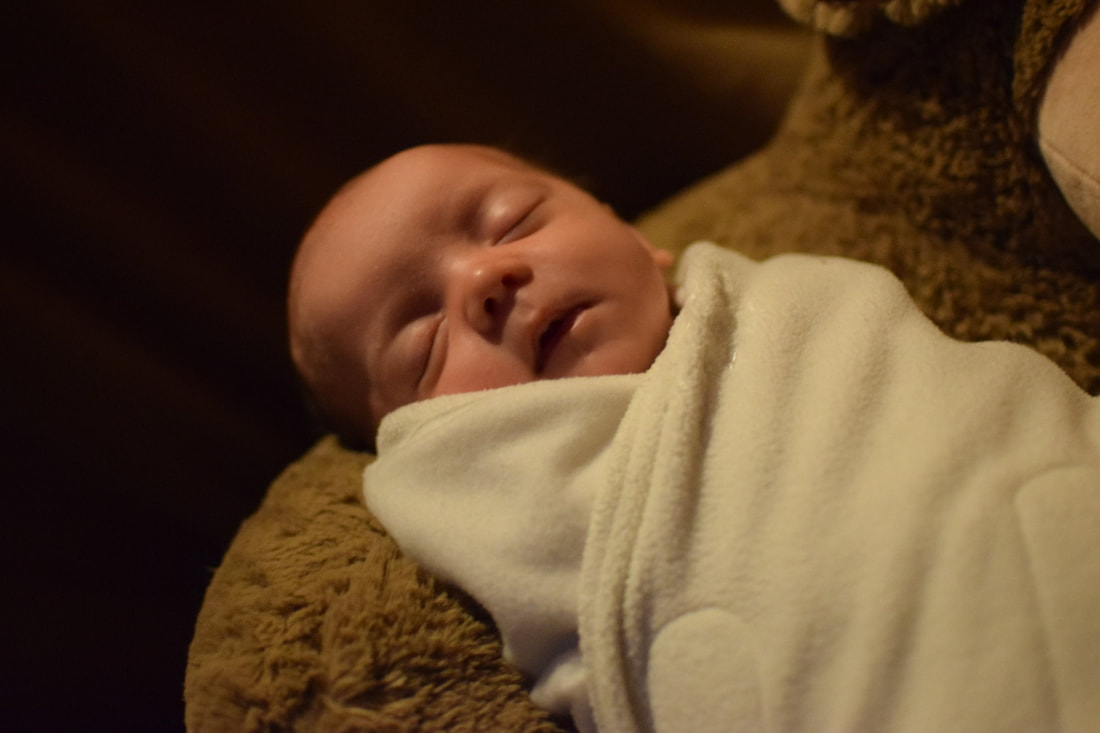 Last year, we expanded the Icare Lending Library at Duke Eye Center to include families at Penn State Hershey Medical Center. Wesley is one of the latest recipients of an Icare tonometer to monitor his glaucoma. This is his story, written by his mother, Jennifer: Wesley was born in May 2020. When the nurses and doctors were conducting his screening immediately after birth, they noticed something wasn’t typical with Wesley’s eyes. Both his eyes were clouded over to the point of not being able to see the iris and pupil, they looked much larger than typical, and he was extremely sensitive to light. Wesley was referred that day to Penn State Hershey Medical Center. At three days old Wesley took the journey to Hershey and received his official diagnosis of congenital glaucoma. The doctors were able to lower his pressures with drops until he had grown more and was a better candidate for anesthesia. Until then, it was weekly visits to have his pressures monitored. At one month old, Wesley had a trabeculotomy in one eye and a goniotomy in the other eye to reduce the pressure. Along with a regimen of drops, his pressures have been fairly stable since his surgery. Having an iCare tonometer at home has been life changing for our family. In a time and situation where we feel like we have little control, this tool allows us to monitor his pressures at home and communicate with his specialist. When we are concerned about how his eyes look or he seems uncomfortable, we are able to check his pressures and call the doctor, if needed. By taking our pressure data sheets to appointments, it allows the doctor to see important trends and how his prescription regimen is helping him. Together, we are able to make sure Wesley has the most informed and best care possible!
0 Comments
Like almost everyone else in 2020, my high school graduation was via Zoom. Despite the unconventional graduation, I am grateful to have had the chance to reconnect with my classmates and teachers one last time. As we are a small class, each of us had the opportunity to give a graduation speech. Here's mine:
I had always been comfortable staying invisible. I faded into the background. It was easy to agree with the most popular opinion and not share my own thoughts and feelings. I was a parrot huddled in a cage of my own making. I presented myself to the world in a way I thought looked good to others, mimicking both their actions and words. Then I joined Hillside for 9th grade. Although my classmates were friendly and welcoming, I hesitated to display my inner thoughts. Most students in my English class were 11th graders with far more life experience than me. However, Jess taught me that my contributions were just as valuable as anyone else’s. In drama, Jean gently pushed me outside of my comfort zone. My shy persona melted away as I became absorbed in the eccentric characters I played. By 10th grade, I was quite comfortable in the small nurturing environment of Hillside. I wanted to mix things up a bit for 11th grade and didn’t feel quite ready for Running Start. In a meeting with Karen, I floated the idea of a semester abroad, and she highly recommended the experience. The following August, I began my adventure in Dublin, Ireland. At first, I fell back into my familiar pre-Hillside habits to cope with the new environment. I made connections from the security of my self-made cage and mirrored others. Hillside had taught me to be open to friendship with people across grades, and to be comfortable with many different personalities. I started coming to school 15 minutes early to chat with whichever students happened to be there. I joined the art club after school. I was still quite reserved, but I was at least initiating conversations. I yearned to reveal my many colors to the world around me. My changes were small, but consistent. I continued the growth I had started at Hillside, no longer adapting my responses to other people’s personalities. Towards the end of September, I volunteered to help out at my school’s open house, presenting interesting physics experiments to prospective students. I felt happy and fulfilled after the successful evening. Something clicked. I felt that I belonged. The door of my cage had always been open, but fear and uncertainty had clouded my desire to leave. In a discussion about video games during lunch the following week, I shared that I prefer board games. Three of us worked together and formed an after-school games club, where Magic and Ticket-to-Ride became out go-to games. I proudly displayed my fine plumage, revealing my authentic self. Confidence filled the space where self-doubt previously lived. My wings spread as I lifted off the ground and soared. When I returned to Seattle, I continued to show my true colors. I felt comfortable discussing my thoughts in English class at Hillside. I had the confidence to participate fully in my Running Start classes at Bellevue College. I shared my opinions in class without fear of being different to those around me. Thank you so much to the Hillside community – staff, students, and the many unseen helpers, for my high school experiences. Thank you for helping me to step out of my comfort zone and get to know myself deeply. My gloved hands tightly grip the chest-high wall. I pull myself along, my shaking legs stiff, refusing to bend. I am a bundle of nerves. Graceful skaters whiz by me in bright glittering outfits, effortlessly gliding and spinning. I delight in their abilities. I was determined to become comfortable on the ice, despite my limited vision and lack of depth perception. It was months before I took my first tentative glide away from the safety of my wall swizzles. My love of skating blossomed. I eventually found myself moving from rocking horses to skating backward around the whole rink, doing one-foot glides as I went. Three years later, I feel free as the cool air brushes past. I gain confidence, allowing my glides to become faster and smoother, aspiring to be like the athletes flying past me. I eagerly participated for the first time in our club’s Winter Ice Show with other novice skaters, skating to "Favorite Things". Ice skating has taught me that it is not important to be good at something in order to enjoy it. It doesn’t matter how I look to other people, or how slowly I progress in comparison to them. Ice skating has taught me to be kind and patient. I do not judge others for their lack of skill or knowledge in any aspect of their lives, because they each have their own story that I know nothing about. To me, skating has become a welcome respite from school and academic pursuits, and the rink is now my second home.
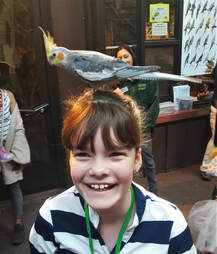 Australian parrots flew around our heads in a frenzy, casting bright bursts of vibrancy around the Willawong Station on our recent Saving Kids' Sight trip to Woodland Park Zoo. I stood in awe, watching eager birds fly onto kids' arms, pecking away at the food pellet sticks they held. One grasped its long, smooth claws on a girl's head, while its friend sat atop another's shoulder, hoping to catch a nibble of tastiness. Kids of all ages displayed joy and excitement on their faces as these friendly creatures frolicked around them. Parents talked in the background, snapping photos and sharing laughter. Everyone seemed to have a great time at the zoo. School is starting back, and it is time to schedule a vision exam with your child's eye doctor.
Let's have some fun with a couple of vision games, which might show up a problem with your child's binocular vision. The Thumb Hop This activity shows the different angles of view of your two eyes, and how your eyes work together to combine both views.
If the thumb does not move after closing one eye, and remains centered over the object, your child may have a problem with binocular vision, and should have their vision checked as soon as possible. Depth Perception With both eyes open, hold a pencil in each hand at arms length from your face, with the erasers pointing towards each other. Spread your arms out, and then bring the pencils together so that the erasers touch. Now close one eye, and try again. Did they slide past each other? It is way more difficult to judge it right without using both eyes. It is even more difficult to touch the tips of the pencils together. The above tasks can also be done using your fingers, and a young child should try using their fingers instead of pencils. If your child has difficulty making their fingers meet with both eyes open, they might have a problem with binocular vision, and should have their vision checked as soon as possible. 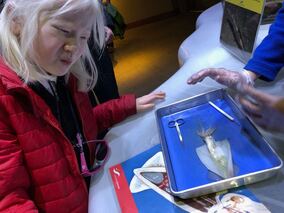 We were so lucky to experience the excitement of Octopus Week during our recent visit to the Seattle Aquarium! Our group quickly dispersed to each corner of the aquarium, exploring all that was on offer. Several of us were intrigued by the cephalopod dissection demonstration, whilst others delighted in the sticking feeling of touching an anemone in the cold tide pools. To everyone's delight, the river otters put on a wonderful display, playfully cracking open and eating their clams. The star of the aquarium, the giant Pacific octopus, showed us just how cool it is, demonstrating its ability to squeeze into tight places and change its colors and textures to perfectly match its surroundings. Do you wonder what the raised Braille letters in public places say? Braille is a system of reading and writing by people with visual impairments, and you will often see Braille signs on walls, usually around four to five feet above the ground.
The Braille cell is the basic unit for all Braille. This cell is composed of six dots that can be either raised or remain flat and used to form letters, numbers, contractions, and punctuation. Find your name in Braille on the Braille Alphabet above, by figuring out what the Braille for each letter of your name looks like. Spelling a word out letter by letter is known as Grade 1 Braille, which occupies way too much space and takes a lot of time to read. Once you can recognize all the symbols of the Braille Alphabet, you can progress to learn Grade 2 Braille, which is also known as contracted Braille. I found a great converter tool online, which allows you to convert your typed words into the various forms of Braille. Click for Braille-translator. Next time you are in an elevator, try to figure out the Braille for each button. Look at the Braille. Then feel it. Can you feel the positions of the raised dots? Look at the button for the Ground Floor, does it say “Lobby” in English, or just show a star? In Braille, it might instead read “Main”. I’m Brent, a 22-year-old linguist from North Carolina. I was born with congenial (childhood) glaucoma and microphthalmia, which means that I had underdeveloped eyes. I lost sight in my left eye at age 3 after many surgeries, and my right eye was diagnosed with glaucoma at age 5. Glaucoma is a lifelong condition. We seek to safeguard the health of the optic nerve, which is threatened by elevated intraocular pressure. Glaucoma treatments involve medications focused on increasing the outflow or decreasing the amount of aqueous fluid produced. Surgeries also center on providing additional outflow methods (shunt surgeries), or decreasing production (laser surgeries). If you have a child with glaucoma, I want you to know that they should nurture their gifts and interests! Growing up, I’ve participated on the school swim team, in school plays, done volunteering and pursued various other interests. Since then, I continued to study Spanish Linguistics and Literature, and now I’m finishing my Masters Degree in Linguistics, with a focus on second-language acquisition and instruction. This fall, I’m deeply grateful for the opportunity to teach in Spain as an English-language assistant. When I was born, a doctor told my parents that they were raising a child, not an eye. Children with glaucoma can live full lives. Childhood glaucoma is serious; children with glaucoma often have reduced sight, be it in acuity and/or periphery, limited night vision, and have to pursue treatment in order to maintain the healthiest vision possible throughout life. They may have to approach activities differently, for example, they use accommodations in P.E., need a flashlight to get around backstage in a play, or may have to figure out other ways to compensate for peripheral vision during a backstroke, but these obstacles can be accommodated. Of course, one large part of providing children with glaucoma the best opportunities to pursue their vocations is medical care for the best vision possible. In my case, the Icare tonometer has allowed my family and I more detailed medical information, allowing us to monitor pressure spikes and drops after surgeries (in the right eye, the Baerveldt shunt and photocytocoagulation surgery). We also have more diurnal information about trends throughout the day for medication purposes. By facilitating access to the Icare tonometer, Saving Kids' Sight is helping other families and doctors gather the most information for clinical decisions, as doctors continue to research medications that can potentially protect the optic nerve, increase pressure outflow, and decrease the production of aqueous humor.
If you are raising a child with glaucoma, I want you to know that you are *not* alone. It is my hope that these resources and community may be of use to you. Splish! Splash! 52 people, representing 15 families, played, chatted, and splashed their way around both pools at Rainier Beach Pool last weekend.
Fearless swimmers dove or jumped off the high dive board into the deep end. Others swam laps, or played Marco Polo. Thrill seekers zoomed down the water slide. Younger kids splashed in the beach zone, had fun with noodles, and played in the currents of the lazy river. There was also ample opportunity to take a break and relax in the hot tub with friends. Each child with a visual impairment went home with a heart-shaped box of delicious Godiva chocolates, donated by a neighbor who had a surplus of chocolates from a corporate event. A big thank you to Seattle Parks and Recreation for helping us to host this event. We huddled in the "Party room" at the back of the Paint Away! studio in Redmond last weekend. One table of artists painted a ceramic piece of their choice, and the other group cut and arranged colored glass pieces to create a nightlight. Parents and kids chatted and ate snacks as they worked. The creations all looked superb at the end.
|
AuthorSarahRose The goal of my blog is to increase awareness of childhood glaucoma and other eye diseases, and to unite kids like me living with visual impairment.Archives
September 2020
|


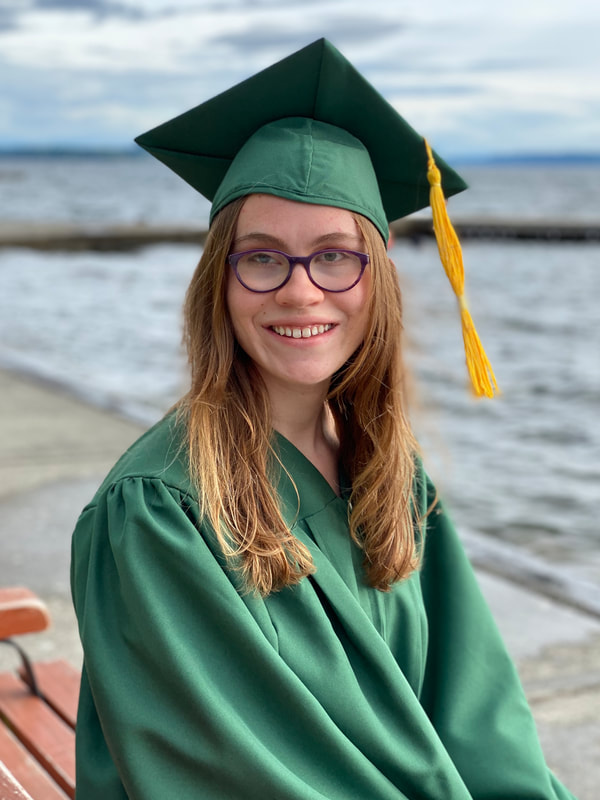
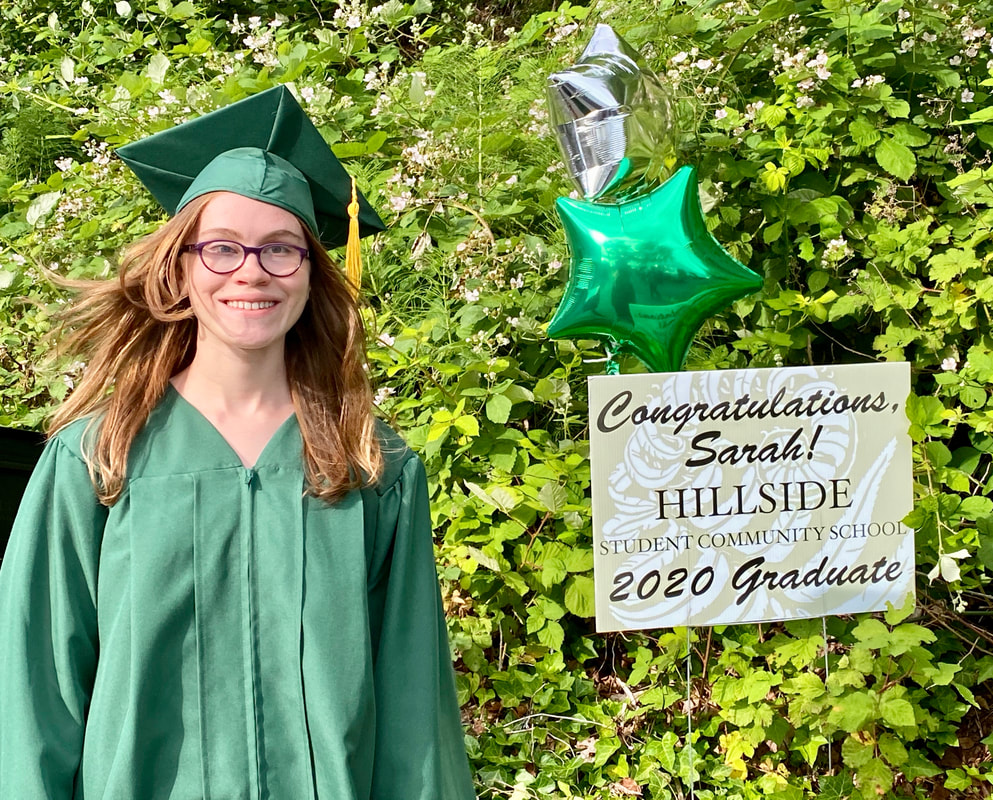
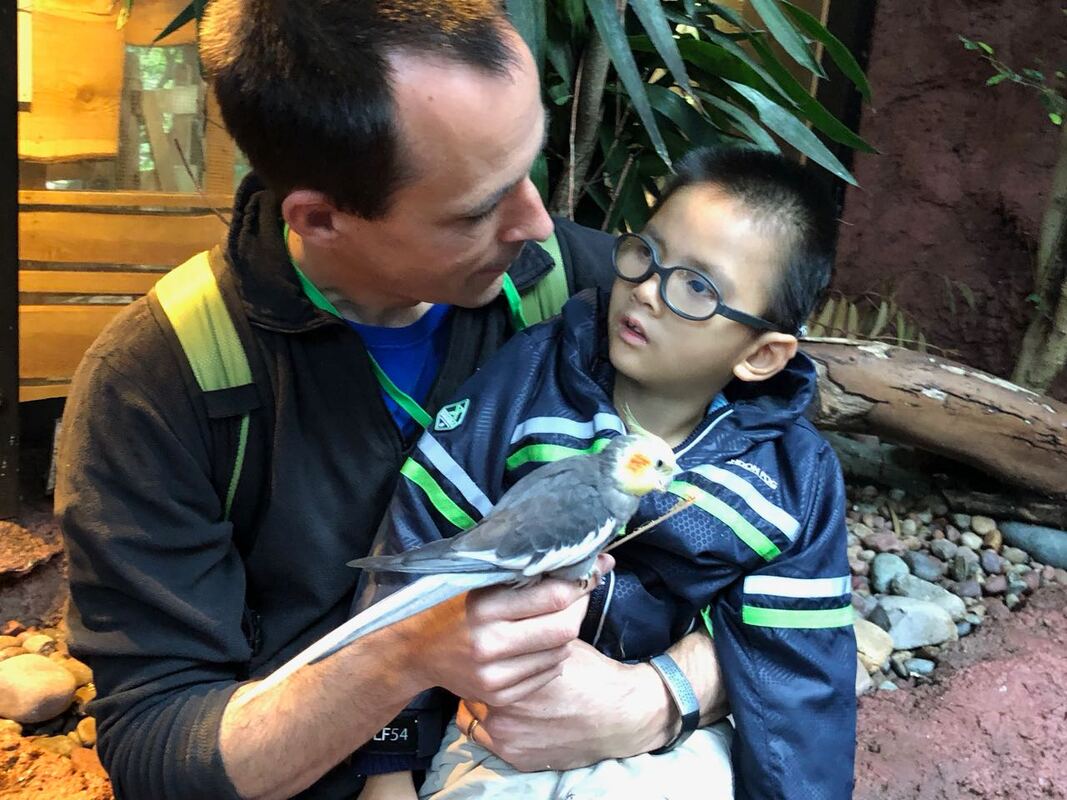
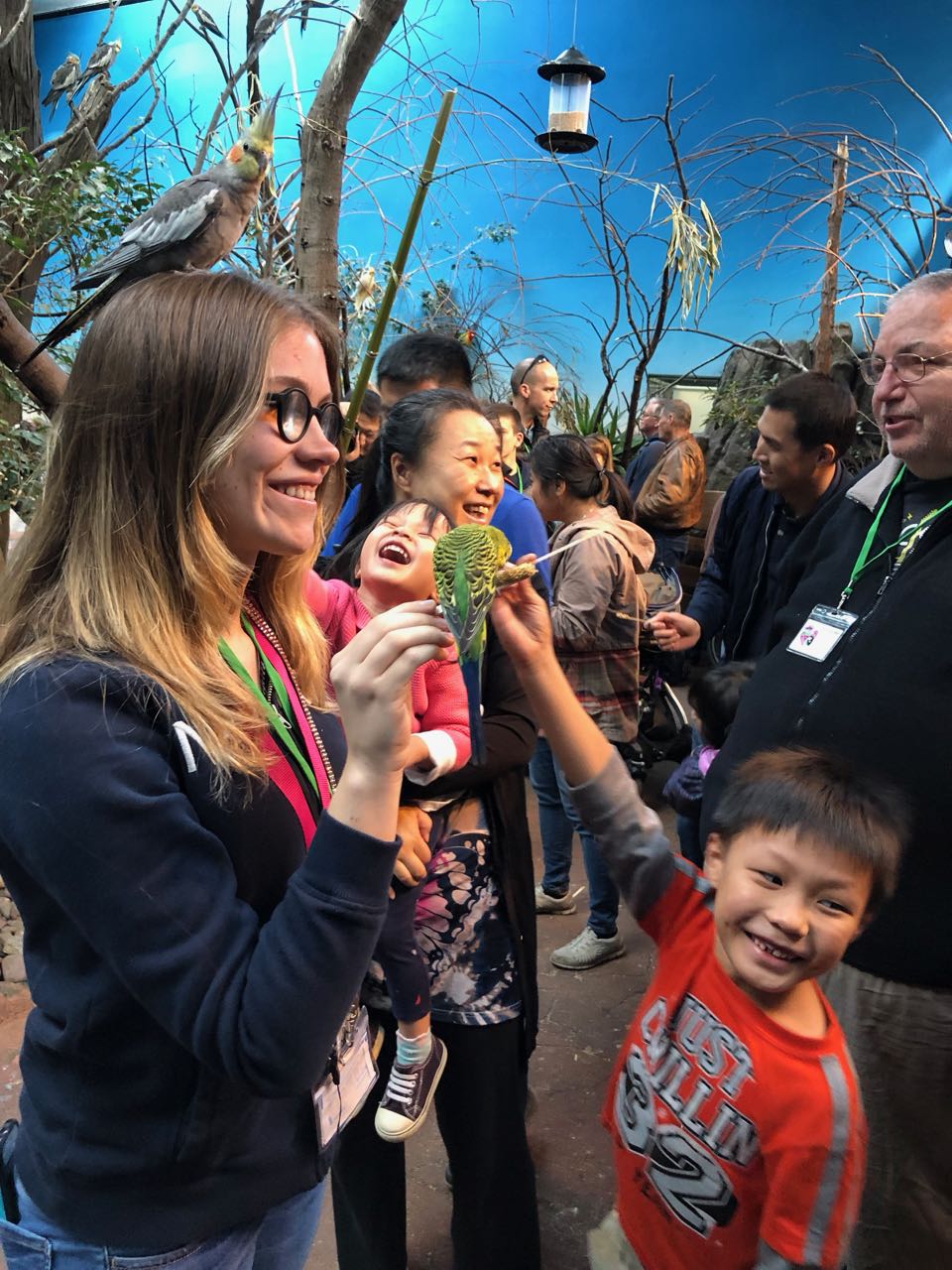
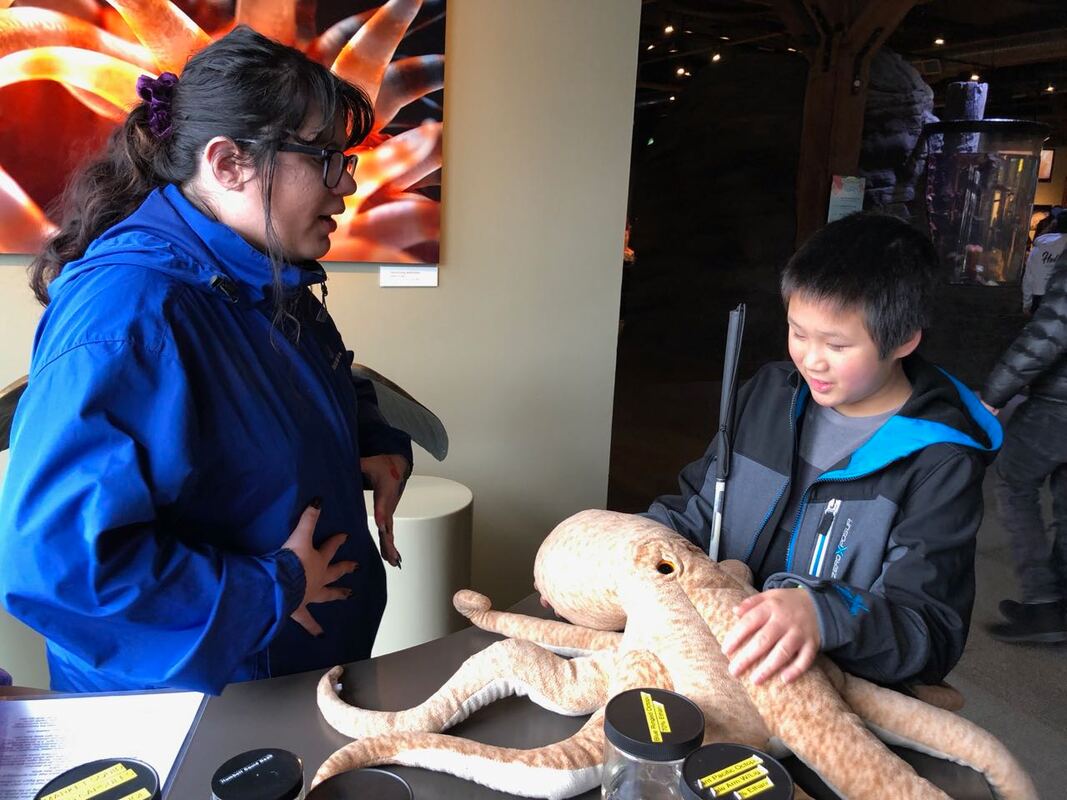
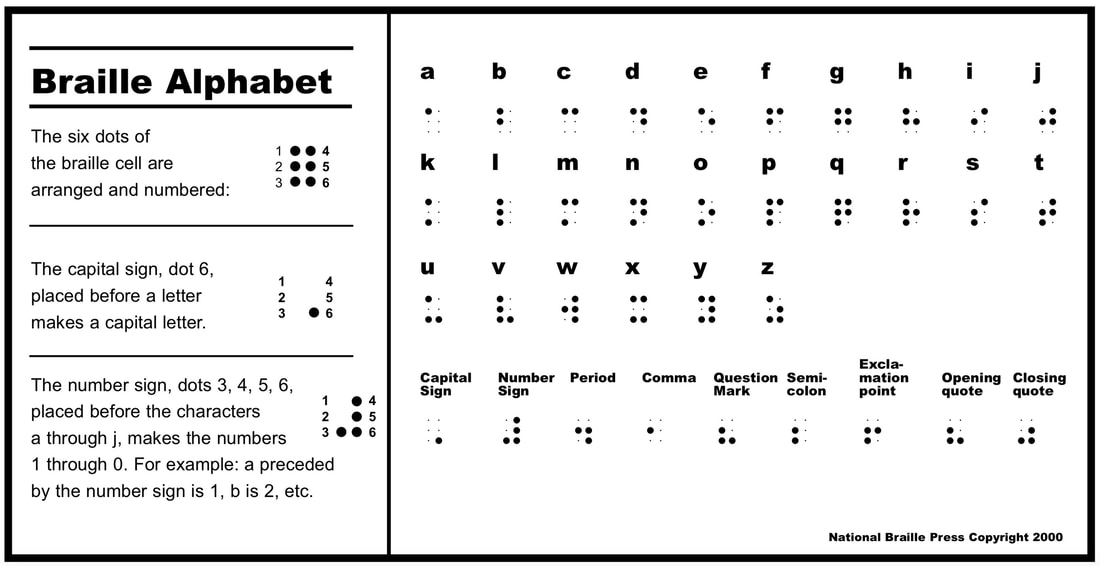
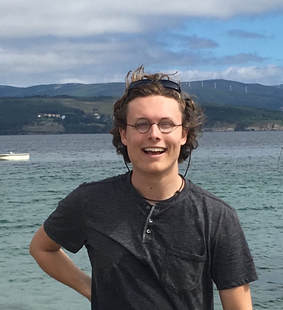
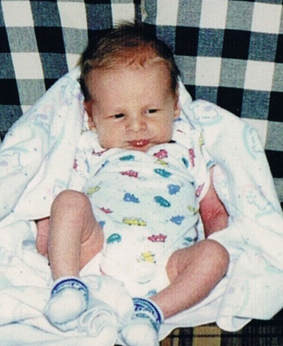
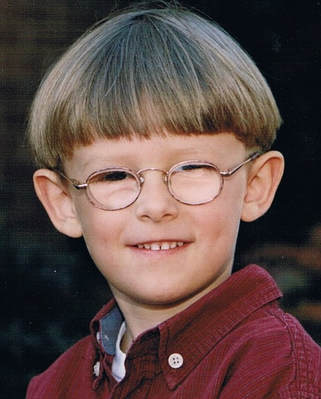
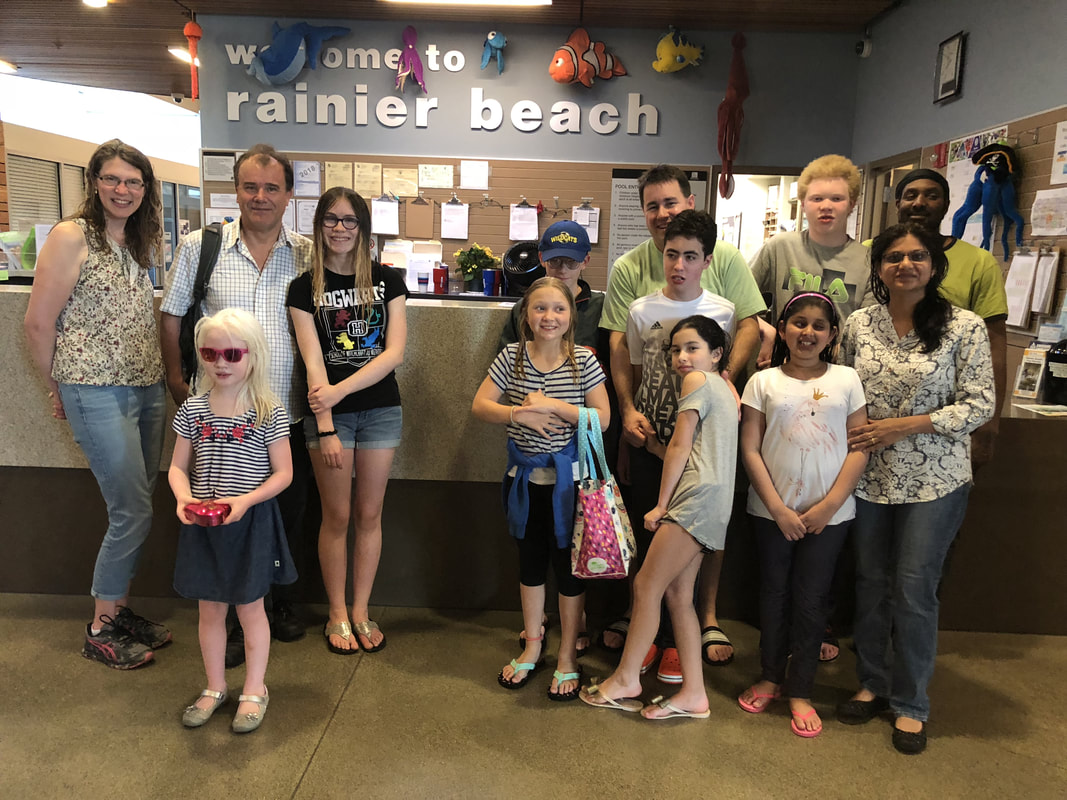
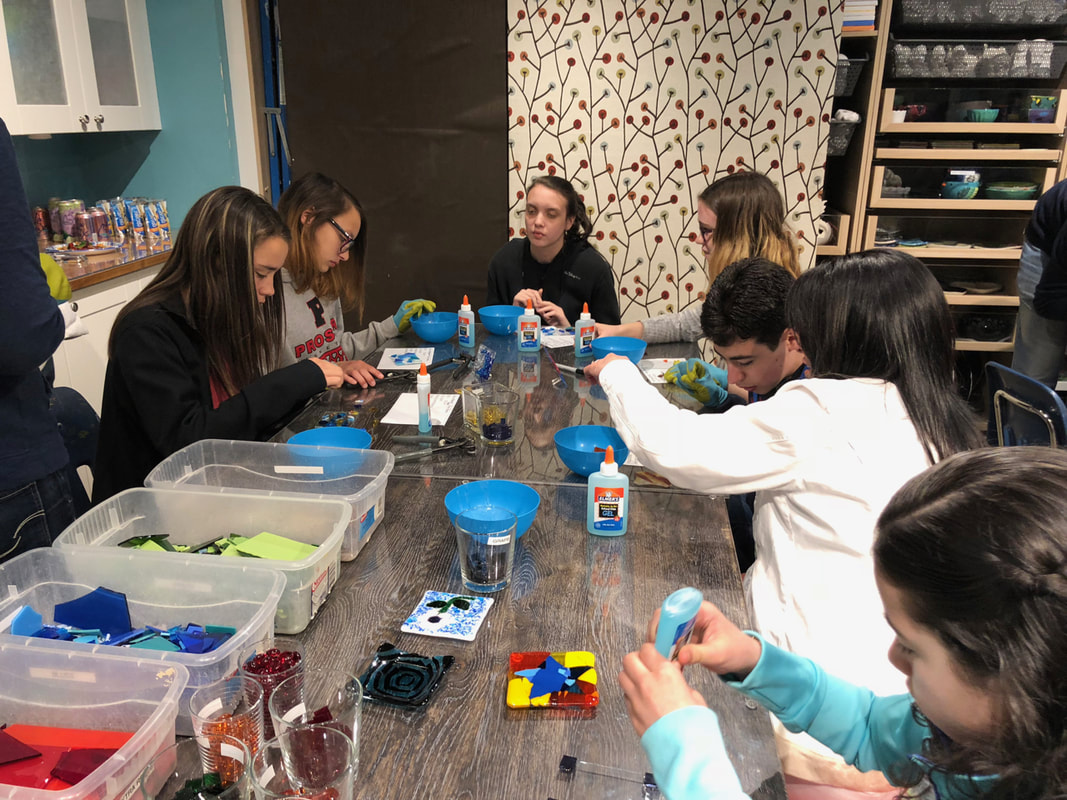
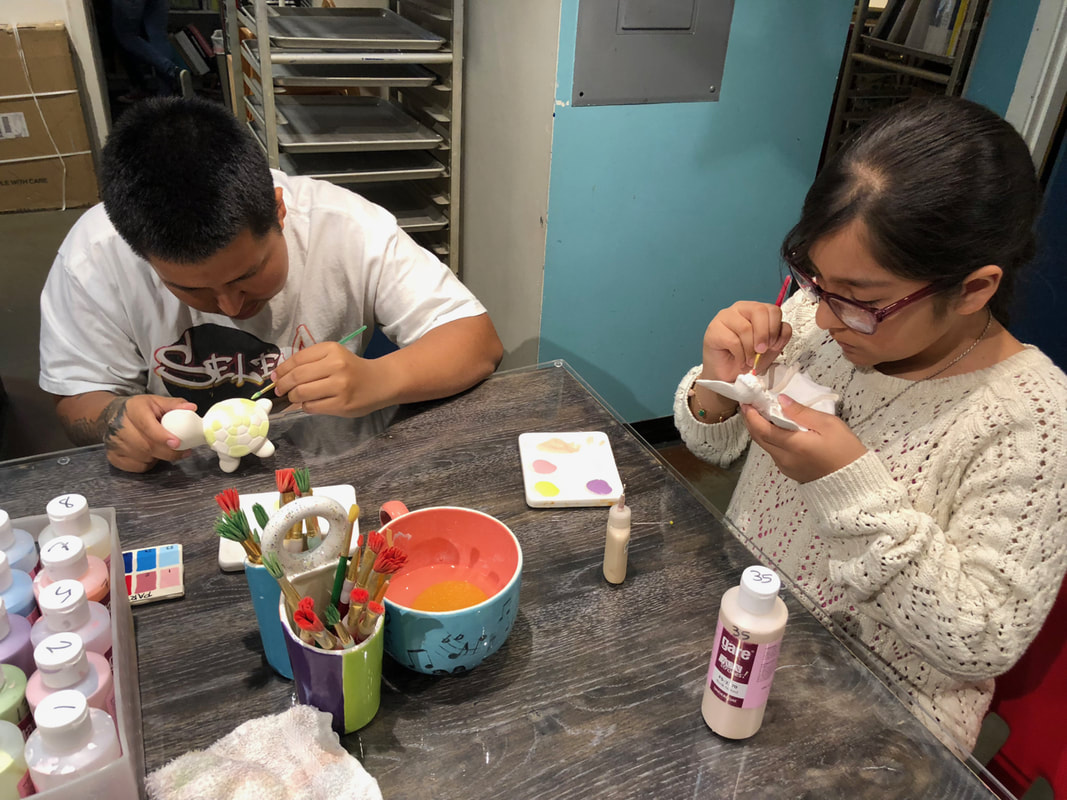
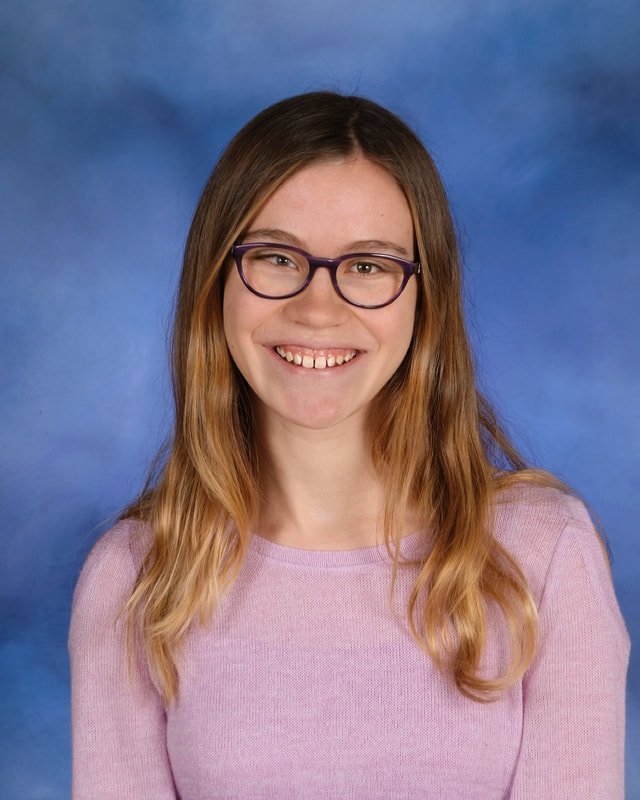
 RSS Feed
RSS Feed